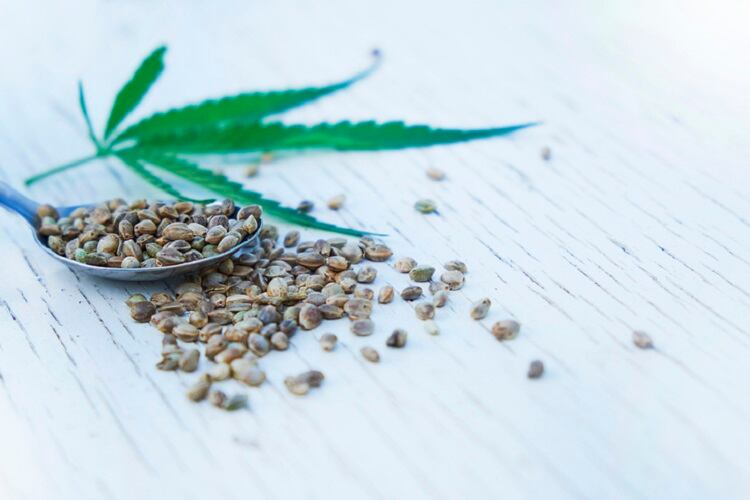From sustainable sourcing, to exotic Asian influences, and all things plant-based, what are the key consumer trends for 2020?
FoodNavigator brings you a round-up of key predictions from some of the world’s major flavour houses, including Comax Flavors, Flavorchem, Bell Flavors and Fragrances, and Kerry Group.
Plant power
Whether it be meat-less burgers, plant-based eggs, or dairy-free milk, the plant-based category was a major trend in 2019.
Plant-based has been on the rise for a few years now – particularly in the snacking category. Between 2013 and 2017, there was a 17% increase in the growth of snacks with a health claims, according to Innova Market Insights. Launches with plant-based ingredients grew at a 44% CAGR during this same period.
New York-based Comax Flavors forecasts the plant-powered snacks trend will continue this year, with flavours in this group including Maple Bacon Ranch, Honey Sriracha, and Lemon Truffle.
Flavours and colours specialist Flavorchem, located in Illinois, has also picked up on the ‘plant-based bloom’. “Plant-based innovation continues to flourish as a result of consumer interest in health, sustainability and ethics, which ties into the broader consumer lifestyle trend towards cleaner living,” noted the firm.
According to Flavorchem, rising stars in the plant-based movement include:
- Jackfruit: A good source of iron, calcium, and B vitamins. The texture of jackfruit mimics the texture of pulled pork and Flavorchem predicts it will soon take over the industry as a meat alternative.
- Plant-based meat blends: Rise in plant-based blends such as beef with pea protein, and chicken with chickpeas or quinoa, is forecast as more consumers take on the flexitarian diet.
- Alternative flour: New fruit, vegetable, nut, and seed flours will launch in 2020; they will be aisles, rather than pre-made into crusts and snack products.
- Oat milk: Oat milk is free from allergens like dairy, egg, soy, gluten, and nuts. Expect to see a growing trend of ready-to-drink oat milk taking over the dairy market.
Mindful sourcing
The move towards sustainable and ethical consumerism has been observed across the board, with a growing number of consumers demanding climate-friendly food.
“As consumers seek more information and expect greater degrees of transparency, they are becoming more mindful about their food choices,” noted Illinois-based Bell Flavors and Fragrances.

This trend has continued into 2020, and will continue to build momentum this year, the flavour house suggested, adding that “mindful sourcing means wanting to know what is in their food and beverages to make informed decisions that might be influenced by the ingredients used, carbon footprint, health benefits, environmental impact, and social/ethical issues.”
A number of Bell’s flavours fit under the ‘mindful sourcing’ umbrella, such as beets, bone broth, dates, ghee, ginseng, hibiscus, matcha, nori, oat milk, sage, and turmeric.
Flavorchem agrees that sustainable consumption will be a chief concern this year, alongside supporting small businesses, and getting closer to brands.
“Consumers will look for greater authenticity in their food options. Purchases are driven by a sense of community pride and eco-preservation,” the company noted.
Further, there will be greater focus on reducing packaging and development sustainable ingredients, and ‘upcycling’ will become the ‘new recycling’ – as companies strive to follow a zero-waste approach by creating value from by-products.
Low to no alcohol beverages
Low to no alcohol beverages have also attracted increased industry attention of late, as consumers opt for alternatives to full-strength tipples.
“Individuals are cutting back on drinking for a variety of reasons and many are looking for low or no alcohol beverages with fewer calories, less sugar, and better-for-you profiles,” according to Comax Flavors’ vice president of corporate communications Catherine Armstrong.
Indeed, according to drinks market analyst IWSR, bottled low and no alcohol beverages are expected to grow by about 32% in the US between 2018 and 2022. This would mark a three-fold growth compared to the previous five years.
Data research firm Morning Consult states that such growth is evidenced by consumers’ changing behaviour. Survey data reveals that close to half of all consumers – regardless of age – have purchased non-alcoholic alternatives. Further, approximately four in 10 of the drinking age population in the US do not drink.
For New York State-headquartered Comax, trending flavours in the low to no beverage category include Matcha Pineapple Punch-less, No-Geroni, and Mango-No-Tini.

While alcohol-free competition may be rising in the full-strength alcohol space, their flavours certainly appear to be growing in popularity.
According to ingredient supplier and consumer foods business, Kerry Group, alcohol flavours are infiltrating other food categories. “The lines between categories are continuously blurring, and we are now seeing, for example, alcohol flavours such as tequila and Cointreau in sweet categories,” noted the Ireland-headquartered firm.
In Kerry’s 2020 taste charts, the ingredients company noted ‘emerging’ and ‘up and coming’ alcohol flavours across a number of food categories. In the sweet food category, for example, Kerry predicts flavours such as gin, margarita, rum, pina colada, and tequila.
In salty snacks, emerging flavour trends include mojio, bloody mary, and Jim Beam. And in sweet dairy, up and coming flavours include whisky and Irish cream.
Asian influences
Younger consumers are driving the exotic flavours trend, suggests Comax. It is this ‘younger generation’ that is craving adventurous and authentic global flavours and share such findings on social media.
Indeed, Asian flavours on menus at fast-casual restaurants are on the up, according to Foodable Research Labs, increases nearly 30% year over year. Millennials have increased menu consumption of Asian flavour-based menu items by more than 12% year over year, noted the business insights firm.
“Comax recognises the younger generations’ desire to experiment, explore global flavours, and broadcast their experiences on social media,” noted Comax’s Armstrong. Trending flavours include Milk Tea, Japanese Pancake, and Ube Vanilla.
According to Kerry, ethnic cuisines such as Thai or Japanese have grown to a point of ‘proliferation’ in the European market. The ingredients supplier similarly noted consumers’ desire for adventure and expansion of their palette, which it said bringing new flavours to European foods.
“Sweet Chili and Soy Sauce are no longer the flavours that consumers look to for authenticity of Asian food, and specific profiles such as palm sugar and sweet basil now deliver the nostalgia of Thailand, with tamari, nori and miso allowing them to recreate the Japanese experience,” noted the firm.
Kerry’s 2020 taste trends list a number of Asian flavours that are either up and coming or emerging in different food categories. In sweet, the ingredients supplier notes soy and Szechuan as emerging trends, and in salty snacks, it lists siracha, teriyaki, shichimi Togarashi, tamari, and wasabi.
For savoury foods, Kerry predicts a rise of products that include sweet basil, fish sauce, palm sugar, kimchi, and miso. Seaweeds, including kombu, wakame, nori, and carrageenan, are also noted as emerging trends.

Southeast Asian flavours are also a top trend for Bell. “The history of this region allows for a rich exchange of ingredients and culinary techniques that is unseen anywhere else on the globe,” the company noted.
“This trend celebrates and explores the diversity between each country’s culinary traditions and natural resources being applied in their use of spices, the art of balancing sweetness and heat, and cooking techniques.”
Bell’s Southeast Asian flavours include birds eye chilli, coconut milk, curry leaf, fish sauce, tamarind, and Thai basil.
CBD: From subculture to mainstream

Cannabidiol (CBD) is a non-psychotic compound produced by the Cannabis sativa L. plant.
According to Flavorchem, this controversial ingredient will soon be ‘everywhere’. Forbes appears to agree, noting that the consumer CBD market is estimated to grow to $2.1bn by 2020, from $202m in 2015.
“Although CBD based food products gained momentum in 2019, it is due to become mainstream in food and beverage items in 2020,” said Flavorchem. “Coffee shops, cafes, and restaurants are [already] incorporating CBD oil into their dining menus, [and] CBD-infused drinks are quickly gaining momentum in the beverage market,” the firm added, “including sparkling waters, coffees, teas, energy drinks, and alcoholic beverages.”
Bell also noted that society is evolving its mindset regarding CBD, from what was once seen as a ‘subculture’ to a ‘social norm’. “Cannabis, once illegal, is now permeating all areas of society, from medical to culinary through an ever-growing number of CBD and THC based products.”
Bell’s strain-specific flavours include Apple Jack, Blackberry Kush, Blue Dream, Cali Cure, and Forbidden Fruit.
FoodNavigator is co-hosting a two day CBD Global Summit in London, 16-17 March 2020. The event wants to bring together the science, business and regulation governing CBD to look at how businesses can unlock this important market opportunity. For more details, to check out our advanced programme, and view confirmed speakers, visit the CBD Global Summit website.



